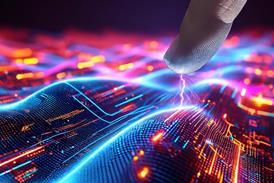New bioprocess solutions can integrate devices and workflows, generate and store information, and use this information to automatically control bioprocesses. Eve, developed by INFORS HT, is an example of such an advanced ‘bioprocess data warehouse’.
An average lab houses a range of different devices: bioreactors, analitical devices, incubators, shakers, and office hardware and software. All of these devices generate data. “The status quo is not ideal”, says Damian von Blarer, product manager at Infors. “Challenges arise due to the use of various software interfaces, different data formats, manual import and export of data, multiple software suppliers, and restricted access to data.” These factors may hamper analysis, archiving and knowledge transfer. The answer, as Von Blarer notes, lies in a so-called data warehouse: a tech solution that automatically generates and processes data accumulated from different sources within a company.
Connecting hardware and software
“An advanced bioprocess data warehouse usually has several components”, says Von Blarer. “One concerns networking and internet: you can link everything anywhere, almost in real-time. Then there’s modern databases that store information centrally, with instant accessibility. Thirdly, there’s the use of faster computers, which can turn data into information using simple or complex models. In the end, it is all about connecting hardware and software.”
‘Using eve you can have direct control over the acetate concentration in your medium’
A bioprocess data warehouse integrates devices and generates and stores all information, using the latest technologies in databases. “The aim is to have everything in one place”, states Von Blarer. “The system gathers data, turns this into information, and loops it directly back to the bioprocess.”
Direct control
Infors has developed an advanced bioprocess data warehouse called eve. Using high-cell density E. coli cultivation as an example, Von Blarer illustrates the advantages of the system. “Using eve you can have direct control over the acetate concentration in your medium”, he says, “something which so far hasn’t been possible with a straightforward approach.”
Eve gathers data from various sources – in this case, from two parallel bioreactors with automated sampling – and feeds it into MATLAB, a multiparameter computing platform. Eve then not only acts as a centralised data and communication platform, but also uses own algorithms. The results generated by the MATLAB models is used to control the process at the desired acetate concentration.
Service
INFORS HT develops and markets eve® and provides its clients with full service when it comes to installation, use, and monitoring and control. “In short, eve enables centralisation and processing of all bioproces data, turns data into information and loops back this information to the bioprocess”, concludes Von Blarer. “It allows for easier planning, sharing, and extraction of information from data. Intelligent control strategies can be implemented in eve or linked third-party software such as MATLAB. This leads to considerable time savings, as well as reproducibility with bioprocesses.”














